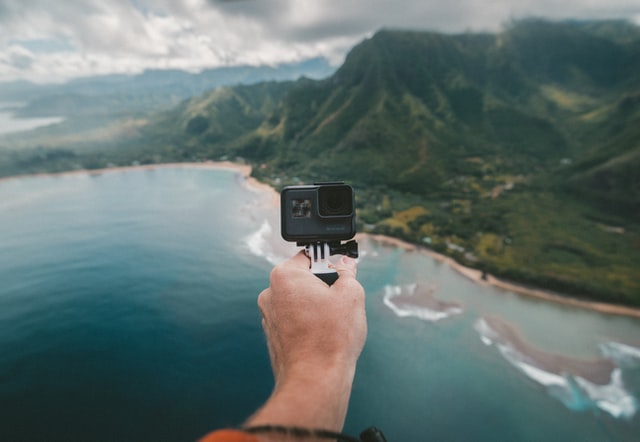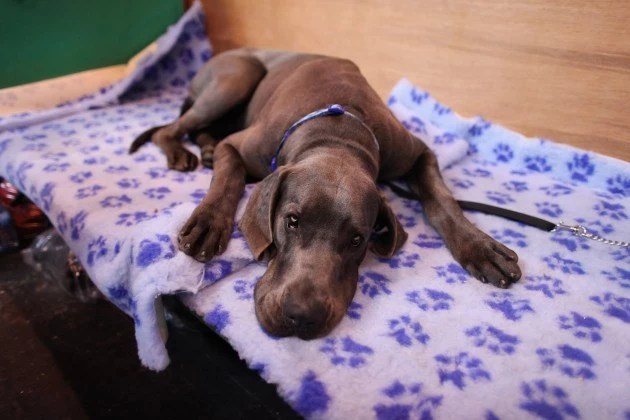“GoPro Camera Settings for Travel: Capture Stunning Memories on the Go
Related Articles GoPro Camera Settings for Travel: Capture Stunning Memories on the Go
- GoPro Travel Techniques: Capturing Your Adventures In Stunning Detail
- 4K Travel Time-Lapse Locations: Capturing The World’s Beauty In Motion
- DSLR Vlogging On The Go: Unleashing Your Creative Potential Anywhere, Anytime
- 4K Photo Composition Travel Apps: Your Guide To Capturing Stunning Travel Photos
- 4K Travel Time-Lapse For Beginners: Capturing The World In Motion
Introduction
Today, we’re excited to unravel an engaging topic: GoPro Camera Settings for Travel: Capture Stunning Memories on the Go. Let’s embark on this journey insights that inform, inspire, and open new perspectives for our readers.
Table of Content
GoPro Camera Settings for Travel: Capture Stunning Memories on the Go

For adventure seekers, globetrotters, and memory-makers, GoPro cameras are the quintessential travel companion. Their compact size, rugged design, and ability to capture stunning photos and videos in various environments make them ideal for documenting your adventures. However, to truly unlock the potential of your GoPro and ensure you’re capturing the best possible footage, understanding the right settings for different travel scenarios is crucial.
This comprehensive guide will walk you through the most important GoPro settings for travel, helping you optimize your camera for everything from scenic landscapes to action-packed activities.
I. Understanding the Key GoPro Settings
Before diving into specific scenarios, let’s break down the core settings that impact your GoPro’s performance:
- Resolution: This determines the size and detail of your footage. Higher resolutions (like 4K or 5.3K) offer more detail but require more storage space and processing power. Lower resolutions (like 1080p) are more storage-friendly but may sacrifice some detail.
- Frame Rate (FPS): This indicates how many frames per second the camera captures. Higher frame rates (60fps, 120fps, 240fps) are ideal for capturing smooth slow-motion footage. Lower frame rates (24fps, 30fps) are better for cinematic-looking footage and conserving storage.
- Field of View (FOV): This refers to how much of the scene is captured in the frame. Options typically include Wide, Linear, Narrow, and SuperView. Wide captures the most expansive view, while Narrow offers a tighter, less distorted perspective.
- Protune: This advanced setting allows you to manually control various aspects of your GoPro’s image, including:
- Bit Rate: Determines the amount of data used to record video. Higher bit rates result in better image quality but larger file sizes.
- Color Profile: Choose between GoPro Color (vibrant and ready to share) or Flat (more neutral, ideal for color grading in post-production).
- White Balance: Adjusts the color temperature of your footage to ensure accurate colors in different lighting conditions.
- ISO Limit: Sets the maximum sensitivity of the camera’s sensor to light. Lower ISO values produce cleaner images, while higher values can introduce noise.
- Sharpness: Controls the level of detail and clarity in your footage.
- EV Compensation: Adjusts the overall brightness of your footage.
- Stabilization: GoPro’s built-in stabilization (HyperSmooth) helps reduce camera shake and produce smoother footage, especially during action activities.
- Shooting Modes: GoPro offers various shooting modes, including Video, Photo, Time Lapse, and Burst. Each mode has its own specific settings and uses.
II. Recommended GoPro Settings for Common Travel Scenarios
Now, let’s explore the best GoPro settings for different travel situations:
1. Scenic Landscapes & Cityscapes
- Resolution: 4K or 5.3K (for maximum detail)
- Frame Rate: 24fps or 30fps (for a cinematic look)
- FOV: Wide (to capture the expansive scene) or Linear (to reduce distortion, especially in architectural shots)
- Protune:
- Bit Rate: High (for maximum image quality)
- Color Profile: GoPro Color (for vibrant, shareable footage)
- White Balance: Auto or adjust based on lighting conditions (e.g., Daylight for sunny days, Cloudy for overcast days)
- ISO Limit: 100-400 (to minimize noise)
- Sharpness: Medium or High
- EV Compensation: Adjust as needed to achieve proper exposure
- Stabilization: On (for smoother shots, especially if walking or using a tripod)
- Shooting Mode: Video or Photo (for still images)
2. Action Sports & Adventure Activities (Hiking, Biking, Surfing, Skiing)
- Resolution: 1080p or 2.7K (for a balance of detail and storage)
- Frame Rate: 60fps or 120fps (for smooth slow-motion potential)
- FOV: Wide or SuperView (to capture the action)
- Protune:
- Bit Rate: High (for good image quality)
- Color Profile: GoPro Color (for vibrant footage)
- White Balance: Auto
- ISO Limit: 400-800 (to allow for faster shutter speeds)
- Sharpness: Medium
- EV Compensation: Adjust as needed
- Stabilization: On (HyperSmooth is essential for reducing camera shake)
- Shooting Mode: Video (consider using TimeWarp for stabilized time-lapse footage while moving)
3. Underwater Adventures (Snorkeling, Diving)
- Resolution: 4K or 2.7K (for capturing the vibrant underwater world)
- Frame Rate: 30fps or 60fps (depending on the desired level of slow-motion)
- FOV: Wide (to capture the expansive underwater view)
- Protune:
- Bit Rate: High
- Color Profile: GoPro Color (or Flat for color correction in post)
- White Balance: Auto (or use a red filter to compensate for color loss at depth)
- ISO Limit: 100-400 (to minimize noise in low-light conditions)
- Sharpness: Medium
- EV Compensation: Adjust as needed
- Stabilization: On (if possible, though underwater stabilization can be challenging)
- Shooting Mode: Video or Photo (consider using Burst mode for capturing fast-moving marine life)
4. Low-Light Situations (Night Scenes, Indoor Settings)
- Resolution: 1080p or 2.7K (to reduce noise)
- Frame Rate: 24fps or 30fps
- FOV: Wide or Medium
- Protune:
- Bit Rate: High
- Color Profile: GoPro Color (or Flat for more control in post)
- White Balance: Adjust based on the light source (e.g., Tungsten for incandescent lights)
- ISO Limit: 800-1600 (be prepared for some noise)
- Sharpness: Medium
- EV Compensation: Adjust as needed to brighten the image
- Stabilization: On (if possible, use a tripod for the best results)
- Shooting Mode: Video or Night Photo (for long exposures)
5. Time-Lapse Photography
- Resolution: 4K or 5.3K
- Interval: Adjust based on the subject and desired effect (e.g., 2-second interval for clouds, 30-second interval for stars)
- FOV: Wide or Linear
- Protune:
- Bit Rate: High
- Color Profile: GoPro Color (or Flat for more control in post)
- White Balance: Auto or adjust based on lighting conditions
- ISO Limit: 100-400
- Sharpness: Medium
- EV Compensation: Adjust as needed
- Stabilization: Off (unless using TimeWarp)
- Shooting Mode: Time Lapse
III. Pro Tips for Travel Photography with Your GoPro
- Use ND Filters: Neutral Density (ND) filters reduce the amount of light entering the lens, allowing you to use slower shutter speeds in bright conditions. This can create smoother, more cinematic footage and reduce motion blur.
- Invest in Accessories: Consider essential accessories like extra batteries, a portable charger, a waterproof housing (if needed), a tripod, and a variety of mounts.
- Practice Before You Go: Familiarize yourself with your GoPro’s settings and features before your trip. Experiment with different settings in various conditions to see what works best for you.
- Clean Your Lens Regularly: Keep your lens clean to ensure sharp, clear footage. Use a microfiber cloth to remove dust and fingerprints.
- Shoot in RAW (for Photos): If you plan to edit your photos in post-production, shooting in RAW format will give you more flexibility and control over the final image.
- Use Voice Control: GoPro’s voice control feature can be incredibly useful for starting and stopping recordings hands-free, especially during action activities.
- Consider the Rule of Thirds: When composing your shots, try to position key elements along the lines or at the intersections of a grid that divides the frame into thirds. This can create more visually appealing and balanced compositions.
- Tell a Story: Think about the story you want to tell with your footage. Capture a variety of shots, including wide shots, close-ups, and action shots, to create a more engaging and dynamic video.
- Edit Your Footage: Don’t be afraid to edit your footage to create a polished final product. Use a video editing software to trim unwanted footage, add music, and adjust colors.
IV. Common Mistakes to Avoid
- Forgetting to Charge Batteries: Always ensure your batteries are fully charged before heading out for the day.
- Not Using a Memory Card with Enough Capacity: Choose a high-capacity memory card (64GB or 128GB) to avoid running out of storage space.
- Shooting in the Wrong Resolution or Frame Rate: Select the appropriate settings for the specific situation to avoid wasting storage space or compromising image quality.
- Not Cleaning the Lens: A dirty lens can result in blurry or distorted footage.
- Forgetting to Bring Extra Batteries: Especially important for longer days of shooting.
- Not Backing Up Your Footage: Regularly back up your footage to a computer or external hard drive to avoid losing your precious memories.
V. Conclusion
By understanding the key GoPro settings and how to adjust them for different travel scenarios, you can unlock the full potential of your camera and capture stunning memories that will last a lifetime. Remember to experiment, practice, and have fun! Happy travels and happy shooting!




